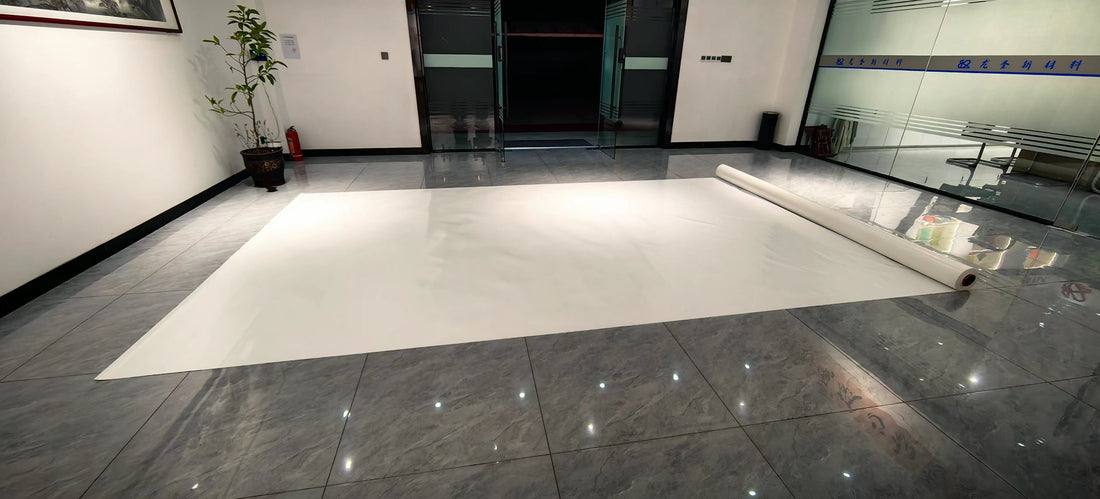
Understanding PVC Coated Fabric Flatness: A Technical Perspective
Share
PVC-coated fabrics are indispensable in industries ranging from architecture and transportation to advertising and industrial applications. Their versatility and durability make them a preferred choice for demanding environments. Among the many performance attributes of PVC-coated fabrics, flatness emerges as a critical factor that influences both functional and aesthetic outcomes.
In this professional analysis, we will explore the significance of flatness, the factors affecting it, methods to assess it, and best practices for ensuring superior flatness in PVC-coated fabrics.
Defining Flatness in PVC-Coated Fabrics
Flatness refers to the uniformity and smoothness of a fabric's surface, free from visible waves, wrinkles, or distortions. This property is not merely a cosmetic feature but a functional one that determines the material's performance during processing, installation, and end-use. Flatness ensures the fabric adheres to design specifications, enabling precision in manufacturing and enhancing the final product's quality.
Why Flatness Matters
Flatness is integral to the performance and success of PVC-coated fabrics across diverse applications:
1.Visual Appeal
- Smooth and uniform surfaces ensure a professional and refined appearance, especially crucial in applications such as tensile structures, banners, and canopies.
2.Functionality and Performance
- In applications such as tarpaulins, covers, and architectural membranes, flatness ensures proper alignment, fitting, and structural integrity.
3.Manufacturing Efficiency
- Flat fabrics simplify processes like cutting, welding, and printing, reducing material waste and ensuring consistent results.
4.Durability
- Flatness minimizes stress concentrations that can occur at surface irregularities, enhancing the fabric's longevity.
Factors Influencing Flatness
Flatness is the result of multiple factors that interact during the production and handling of PVC-coated fabrics:
1.Base Fabric Construction
-
The base fabric serves as the foundational layer for the PVC coating. High-quality substrates with consistent fiber density and weave tension contribute to superior flatness.
- Precision in the application of PVC layers is critical. Uneven coating thickness can cause surface distortions. Techniques like knife-over-roll and advanced calendaring help achieve uniform coatings.
3.Tension Management
- Maintaining appropriate tension throughout the weaving and coating processes prevents distortions, ensuring a flat and stable fabric.
4.Thermal Stabilization
- Controlled heating during production sets the fabric's dimensions and helps eliminate residual stresses that can affect flatness.
5.Storage and Handling
-
Improper storage or transportation, such as folding instead of rolling, can introduce creases and permanent distortions that compromise flatness.
Evaluating Flatness
Flatness can be assessed through both qualitative and quantitative approaches:
-
Visual Inspection Observing the fabric under standardized lighting conditions helps identify waves, wrinkles, or surface inconsistencies.
-
Surface Profiling Tools Advanced instruments can measure deviations from a flat plane, providing precise data for quality assurance.
-
Thickness Uniformity Tests Consistent thickness across the fabric is an indicator of uniform coating, which directly correlates with flatness.
Best Practices for Ensuring Superior Flatness
To achieve and maintain high flatness standards, manufacturers must adopt stringent quality control measures and optimized processes:
1. High-Quality Inputs
-
Use premium-grade base fabrics and PVC compounds to ensure a strong foundation for achieving flatness.
2. Advanced Production Technology
- Invest in cutting-edge coating equipment capable of delivering precise and consistent results.
3. Tension Control Systems
- Implement real-time tension monitoring and adjustment mechanisms during both weaving and coating processes.
4. Post-Production Refinement
- Techniques like calendering and heat flattening can be employed to improve flatness post-coating.
5. Proper Storage Protocols
- Roll fabrics on cores with protective covers and avoid stacking rolls improperly to prevent surface damage.
Critical Applications Requiring Optimal Flatness
Certain applications demand impeccable flatness to meet functional and aesthetic requirements:
1. Architectural Membranes-
Flatness ensures precision and structural integrity in tensile structures, preventing visual and functional flaws.
2. Advertising and Signage
-
Smooth surfaces enable crisp printing and vivid displays, enhancing message clarity and impact.
3. Protective Covers
-
Flat fabrics provide better sealing and tension distribution in applications like tarpaulins and vehicle covers.
4. Marine Fabrics
-
In marine applications, flatness improves fit and reduces drag, enhancing performance and durability.
UC Textile’s Commitment to Flatness Excellence
At UC Textile, we leverage advanced manufacturing technologies and rigorous quality control systems to deliver PVC-coated fabrics with industry-leading flatness. Our team works closely with clients to understand their specific needs, ensuring tailored solutions for architectural, industrial, and specialized applications.
Conclusion
Flatness is a vital quality parameter for PVC-coated fabrics, directly impacting their appearance, functionality, and performance. By understanding the factors that influence flatness and employing best practices, manufacturers can consistently produce superior materials. At UC Textile, we are dedicated to excellence in flatness and overall quality, enabling our customers to achieve outstanding results in their projects.
Discover more about our innovative products and solutions by visiting www.uctextile.com.
